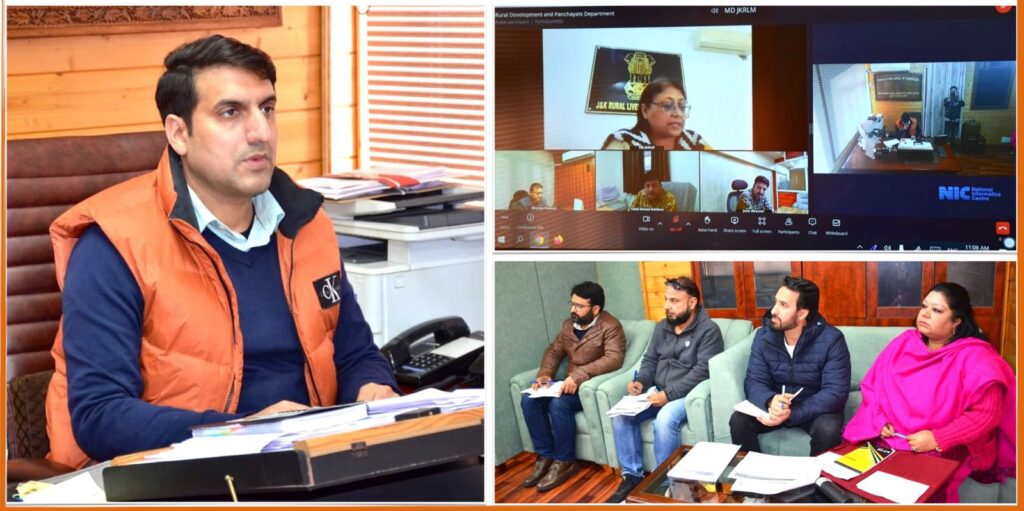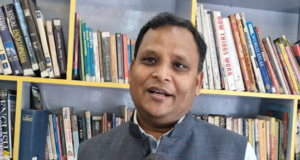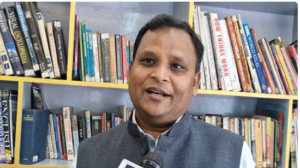Secretary RDD evaluates JKRLM strategy for strengthening rural livelihoods
Through SHGs, women rewriting stories of resilience, leadership, economic expression: Aijaz Asad
SRINAGAR, NOVEMBER 26: Secretary, Rural Development Department and Panchayati Raj (RDD&PR), Mohammad Aijaz Asad, today reviewed and evaluated Jammu & Kashmir Rural Livelihoods Mission’s (JKRLM) strategy for empowering rural communities, particularly women, across the Union Territory.

The Secretary, while chairing a meeting held to have an extensive review of JKRLM’s physical and financial progress, asked for laying focus on key components of the National Rural Livelihoods Mission (NRLM) such as the Start-Up Village Entrepreneurship Program (SVEP) and Mahila Kisan Sashaktikaran Pariyojana (MKSP).
Among others the meeting was attended by Mission Director, JKRLM, Shubra Sharma, Director Finance, Umar Khan, Joint Director Planning, Kamal Kumar Sharma, Additional Mission Director, JKRLM, Mridhul Salathia and State Program Managers of the mission.
It was informed in the meeting that an impressive number of 90,218 Self-Help Groups (SHGs) have been formed under JKRLM, supported by 7,083 Village Organizations (VOs) and 585 Cluster Level Federations (CLFs). These grassroots institutions have mobilized over 7.36 lakh rural households, fostering collective growth and self-reliance.
The Secretary was briefed that the department has successfully linked 52,000 SHGs to banks, improving financial access for rural women entrepreneurs. He called for identifying top-performing districts to replicate successful models across other regions of Jammu & Kashmir.
The Secretary said that the success of JKRLM lies in its community-driven approach, empowering women and building sustainable institutions. He emphasized that the mission aligns with the government’s commitment to rural development and women empowerment.
The Secretary also recognized the role of Digi Sakhis and Bank Sakhis, who have been empowered as banking correspondents, to bridge the accessibility gap for rural communities.
In addition, he stressed the need for a comprehensive analysis of SHGs that have achieved self-sufficiency, aiming to increase the percentage of self-sustaining SHGs in the coming years.
The Secretary emphasized knowledge transfer as a key factor in the mission’s success, encouraging the sharing of best practices among districts and SHGs. He also called for synchronization of all SHGs on the LokOS portal to ensure streamlined monitoring and transparency.
MD, JKRLM provided an overview of the mission’s initiatives. She emphasized the UMEED project’s role in mobilizing rural households and creating economic opportunities through rural enterprises.
Since its inception in 2013-14, the mission has disbursed Rs. 454.83 crore as capitalization funds to Community Based Organizations (CBOs) and facilitated Rs.2,150.50 crore in bank credit for 51,578 SHGs.
Additionally, the Start-Up Village Entrepreneurship Program (SVEP) has supported 4,028 enterprises across 15 blocks, with Rs. 9.78 crore disbursed under the Community Enterprise Fund (CEF).
Sharma also highlighted the success of the Farm Livelihoods programme which has been implemented in 264 CD blocks, covering 5.46 lakh Mahila Kisans (women farmers) with agro-ecological and livestock management practices.






